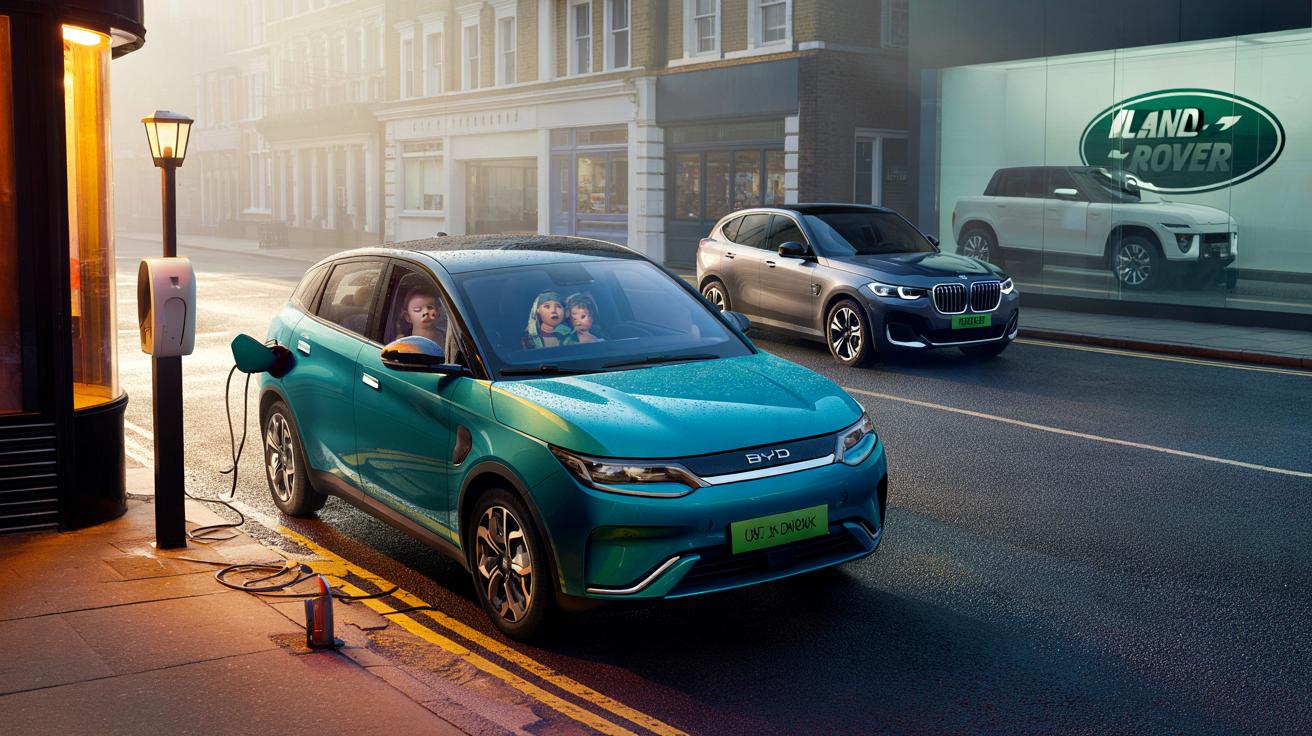The badge wasn’t premium, the finance was almost cheeky, and the thing just glided through London like it had lived here all its life. Friends muttered “BMW” with that lifted eyebrow, then went quiet on the test drive. Meanwhile, the brand behind my car is quietly shifting more metal worldwide than Land Rover. The ground’s moving under our tyres. You can feel it.
It was a misty morning on the South Circular when the penny dropped. My new BYD Dolphin hummed along like a kettle about to boil, the cabin warm, kids half-asleep, wipers whispering. A chap in a BMW X1 stared at the rectangular badge, curious more than hostile. We stopped by the bakery, plugged into a lamppost charger, and I paid less than a latte for 30 miles. The car didn’t gloat. It just worked.
I thought I’d miss the BMW badge. I didn’t. The steering was light, the camera crisp, the one-pedal feel almost addictive. Later, in a supermarket car park, a neighbour asked what it was and how much it cost. I told him. His eyebrows did a magic trick. Then I checked the sales charts.
When “cheap” stops feeling cheap
Here’s the uncomfortable bit for badge snobs. My Dolphin is easier to live with than several BMWs I’ve driven. The turning circle is city-perfect; the ride rides; the lane-keep isn’t bossy. The screen layout makes sense without a YouTube tutorial. Wireless CarPlay hooks instantly, and the phone-as-key hasn’t failed once. Most days, it feels like the car knows what I need before I prod a button. That’s rare. And yes, **it’s better than BMW for daily London life**. Not on a track. On school runs, tight bays and soggy B-roads.
The surprise continues when you add up the money. My monthly PCP is lower than my broadband and gym combined. Off-peak electrons at home come in at pennies per mile, and even public charging has been manageable with a bit of planning. I did a Brighton loop with one 20-minute top-up, spent less than a pub sandwich, and came home with 25% in the pack. Meanwhile the brand behind my car, BYD, is moving numbers fast globally — **outselling Land Rover** by a country mile in sheer volume. People aren’t just curious; they’re buying.
Why this sudden competence? Batteries. BYD builds its own cells and packs, the Blade tech, tight and sensible. LFP chemistry isn’t glamorous, yet it’s safe, long-lived, and cheaper to produce. The whole car feels designed around that simplicity: fewer moving parts, software-first thinking, less obsession with faux luxury. BMW still owns handling nuance, brand theatre, heritage. What’s changed is the brief. Most commutes aren’t Nürburgring laps. They’re queues, kerbs, kids, and kerfuffle. The Chinese proposition nails the boring bits so cleanly that the fun bits feel like a nice extra, not the whole point.
How to make a Chinese EV work for British life
Start with the boring maths. Work out your weekly miles, then pick the smallest battery that covers your longest typical day with 20–30% headroom. That’s it. For charging, grab a cheap night tariff if you can, or map the reliable lampposts and 50–100 kW stations in your orbit. Set a weekday charging routine that you’ll actually keep. Let the car live at 20–80% most days. Update the software the evening it arrives, then drive it like any other hatch. Simple beats clever.
Don’t chase brochure hype. Look at seats, visibility, and the lane-keep behaviour on your local dual carriageway. Check the boot shape with your actual pushchair, box of tools, or football kit. Spend 10 minutes pairing your phone, then force yourself to use the native navigation once. If it irritates you in five minutes, it’ll irritate you forever. We’ve all had that moment when a car feels perfect on paper and awkward on your street. **Let’s be honest: nobody really does that every day.** You need a car that forgives you when you forget to plan.
On expectations, keep your heart soft and your head clear. This isn’t about worshipping new badges; it’s about what works.
“It just works, and it’s cheap to run,” my neighbour said after a week in mine. “That’s the whole trick, isn’t it?”
Here’s a quick crib for test drives:
- Price I paid: under £28k on the road, with a decent spec.
- Real range: 180–220 miles in mixed UK weather, more in summer.
- Charge speed: 88–100 kW peak; 20–80% in roughly 30–35 minutes.
- Warranty: battery coverage that outlasts most leases.
- Tyres and brakes: quiet, low-wear, and cheap to replace.
What this shift really means
The British car conversation is widening. You can love a 3 Series and still admit a £27k EV that runs at 6p a mile is a smarter tool for Monday to Thursday. You can admire Land Rover’s theatre and still notice that a Chinese hatch is quietly owning the boring, necessary bits of modern driving. That’s not a betrayal of taste. It’s a recalibration of value. My Dolphin isn’t perfect. The indicator click has the personality of a vending machine. The voice assistant tries too hard. And yet the total experience, the sum of the small conveniences, is startlingly grown-up.
Every driveway is a compromise between price, pride, and practicality. The surprise is how far the practicality column has moved. Vertical integration, fast software cycles, and plain old manufacturing muscle have put real pressure on Europe’s mid-market. Some won’t care. Many will. Your next car might be chosen the way you pick a phone: updates, battery, ease-of-use, and a plan that doesn’t ambush your bank account. You may still go German. You may not. Either way, the quiet car in the slow lane is writing the future in lowercase. And it’s doing it now.
| Point clé | Détail | Intérêt pour le lecteur |
|---|---|---|
| Daily ease beats badge prestige | Simple software, tidy ride, city-friendly size | Helps decide with real-life criteria, not marketing gloss |
| Running costs matter | Night tariffs and modest packs cut pence-per-mile | Saves money without sacrificing usability |
| Global sales tell a story | Chinese brands ramping up, BYD selling big numbers | Signals where tech and value are heading next |
FAQ :
- Is a cheap Chinese EV actually reliable?Brands like BYD build their own batteries and use proven LFP chemistry. Reliability is trending solid, with long warranties and fewer moving parts than petrol cars.
- Will I miss the “premium” feel?If you live on the M25 and in car parks, you’ll notice convenience more than wood veneer. Soft-touch where it counts, quiet cabins, and features that just work go a long way.
- What about depreciation?EV values are volatile across the board. Low purchase price and low running costs help offset drops. Leasing or PCP can cap your risk cleanly.
- How do I charge without a driveway?Mix lamppost charging, workplace plugs, and a weekly fast-charge stop. Plan around your routines, not vice versa. Small, regular top-ups beat heroic 0–100% sessions.
- Is it really “better than BMW”?On outright dynamics, no. On daily British life — tight streets, cheap miles, stress-free tech — often yes. Pick the tool for the job, not the myth.








